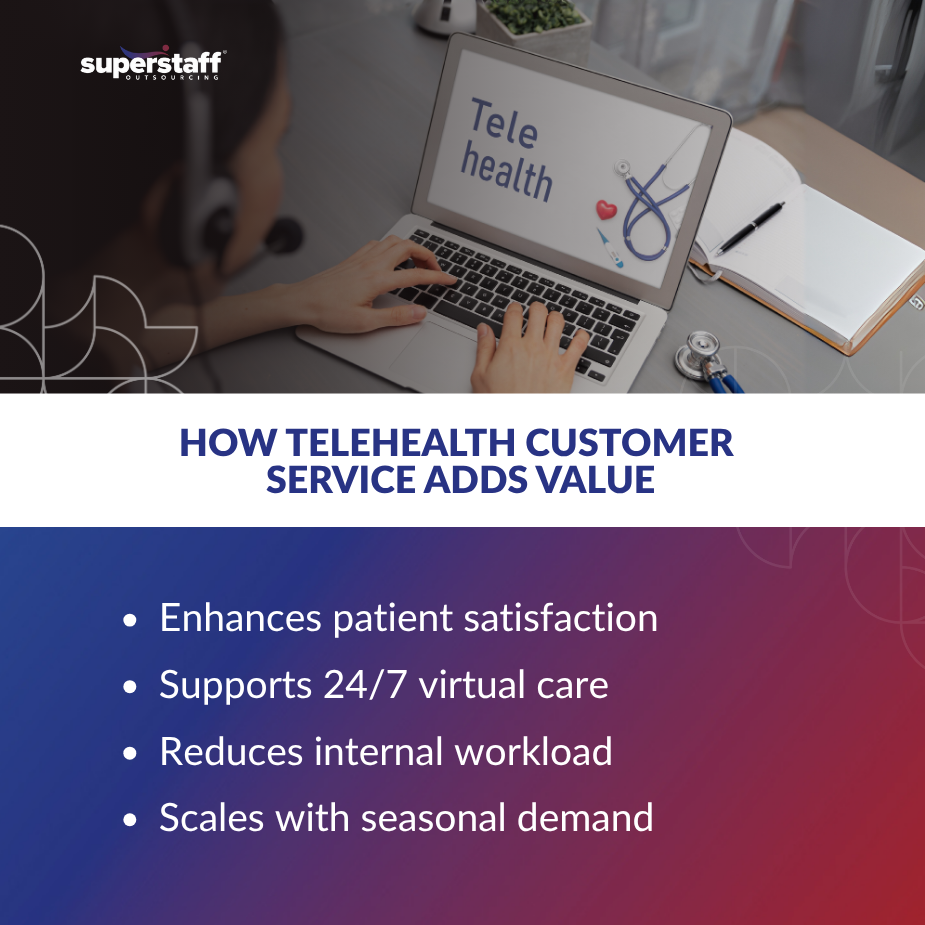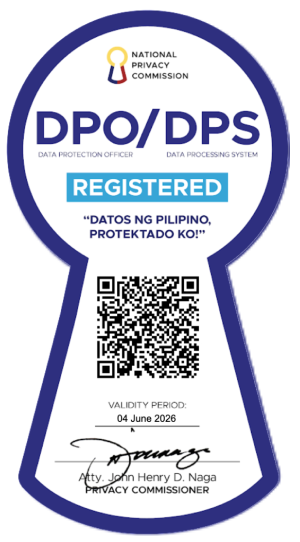
The telehealth boom hasn’t slowed—and neither have the support demands behind it. As virtual care becomes a staple of modern healthcare, providers must navigate an increasingly complex landscape of patient needs, technology, and regulatory obligations. That’s why telehealth customer service has emerged as a critical differentiator for providers looking to maximize patient satisfaction and operational efficiency. In this blog, we’ll explore how outsourced support services empower telehealth systems to deliver on expectations, streamline operations, and protect clinician focus—all while staying compliant and scalable.
The Operational Burden Behind Every Telehealth Appointment
Behind each successful teleconsultation is a web of administrative tasks, technical workflows, and customer interactions. When a patient connects for a virtual visit, that appointment triggers a chain of processes: intake forms, appointment confirmation, billing reconciliation, technical troubleshooting, feedback collection, insurance verification—the list goes on.
Internal teams often struggle under this weight, with limited bandwidth to manage high volumes, seasonal fluctuations, or multi-channel inquiries. Patients expect seamless digital journeys, whether booking via an app, navigating a telehealth platform, checking insurance coverage, or seeking help when a connection fails. When any of these steps falter, the entire experience suffers—and so does the provider’s reputation.
Outsourcing is increasingly seen as a proactive way to ease these burdens. Many providers are now turning to outsourced telehealth customer service partners who can handle the logistics and ensure each touchpoint runs smoothly.

Where Outsourced Support Services Make the Biggest Impact
From frontlines to back office, outsourced support services play a vital role in keeping telehealth systems running efficiently. On the front lines, call center agents handle 24/7 live patient support: confirming appointments, rescheduling, escalating issues, and providing human reassurance. In the back office, dedicated teams process insurance claims, verify patient information, update electronic health records, and handle billing inquiries.
When patients struggle with platform navigation or video quality, outsourced IT helpdesk specialists step in—offering guidance, troubleshooting tips, and real-time assistance. Because these services are omnichannel, patients can reach support via phone, chat, email, or even social media, whichever they prefer.
Outsourcing telehealth customer service to experienced BPO partners ensures patients aren’t left waiting or confused during critical moments, helping maintain trust and continuity of care.
By engaging a BPO partner experienced in healthcare, providers gain flexible, on-demand capacity. Whether it’s covering after-hours calls or scaling up during flu season, these teams integrate seamlessly into operations—allowing in-house staff to focus on care delivery rather than administrative minutiae.
Enhancing Patient Satisfaction Through Better CX
Patient loyalty in telehealth hinges not only on clinical care but also on the experience of interaction. A warm greeting, quick response, clear explanation—these moments build trust in a virtual environment. Delays, long hold times, or apathetic support erode that trust quickly.
Outsourced agents trained specifically in healthcare etiquette and empathy bring consistency to every interaction. They act like extensions of the provider’s brand, using respectful language, active listening, and culturally sensitive communication. For diverse populations, multilingual support is key—ensuring non-English speakers can get help without frustration or misunderstanding.
Flexible staffing models enable telehealth platforms to reduce wait times significantly. When call volumes spike, outsourced teams surge into action, maintaining smooth service levels and preventing bottlenecks. Ultimately, that results in happier patients, fewer abandoned appointments, and stronger loyalty—crucial differentiators in a competitive healthcare market. This level of care from telehealth customer service teams can be the deciding factor in whether a patient returns or switches providers.
Protecting Your Core Teams From Burnout
When clinicians juggle administrative follow-ups, appointment reminders, and documentation, their focus on patient care suffers. Telehealth thrives when clinicians are fully engaged in diagnosis, communication, and treatment—not paperwork.
Outsourcing data entry, scheduling reminders, claims processing, and other routine tasks keeps core teams focused on what they do best. Even better, seasonal or regional demand surges—like during flu season or a new wellness initiative—don’t overwhelm internal staff. Instead, outsourced teams scale up, handling the lift while clinicians maintain consistent, high-quality care.
Behind the scenes, a responsive telehealth customer service operation works to ensure that every non-clinical touchpoint is covered, letting healthcare professionals concentrate on care instead of call queues.
This support not only preserves clinician morale—it protects against burnout, staffing turnover, and the hidden costs of disengagement.
Meeting Compliance and Data Security Standards
In U.S. healthcare, HIPAA compliance and data security are non-negotiable. That’s one reason BPO SERVICES FOR HEALTHCARE are built around rigorous protocols. Top-tier BPO providers enforce strict access controls, encrypted communications, and certified audits. They train agents in PHI handling, conduct regular compliance reviews, and adhere to best practices for data safeguarding.
Experienced providers—like SuperStaff—understand the unique demands of U.S. telehealth. They implement tailored processes and systems that align with regulatory requirements. This means every patient form, verification process, and support interaction meets the highest standards, reducing risks and protecting patient privacy.
When outsourced telehealth customer service teams are trained with compliance at their core, telehealth companies can confidently scale their services without sacrificing trust or security.
Scaling Telehealth Without Sacrificing Quality
One of the greatest advantages of outsourcing is operational agility. With outsourced staffing, telehealth providers can scale services up or down based on demand without recruiting or onboarding new internal staff.
Launch a pilot program for a new service line? Outsourced teams can manage it from day one. Expanding to a new region that requires multilingual support? BPO partners already have trained agents available. Facing unpredictable demand—due to public health emergencies, seasonal trends, or marketing campaigns? Capacity adjusts automatically.
Outsourced telehealth customer service teams offer the flexibility and responsiveness needed to serve new patients or markets, even with short lead times.
This flexibility lets telehealth providers pursue growth without compromising the quality of patient service. That’s why many decision-makers now view outsourcing not just as a cost-cutting tool, but as a strategic investment in reliability and operational resilience.
Improving Telehealth Efficiency Through Support Outsourcing
Many organizations have discovered that improving telehealth efficiency through support outsourcing means more than just faster ticket resolution or cost savings. It’s about designing patient-centric systems that operate reliably behind the scenes. With dedicated teams handling workflow automation, billing accuracy, and after-hours triage, providers can deliver care that’s prompt, informed, and connected.
Support partners that specialize in telehealth customer service bring in-depth knowledge of healthcare protocols, allowing for smooth integrations with electronic health records, medical billing systems, and CRM platforms. These integrations are essential for cohesive care delivery and faster patient resolutions.
This long-tail goal underscores how outsourcing elevates telehealth from an ad-hoc solution into a mature, scalable, and patient-focused system. It transforms administrative burdens into streamlined processes—supporting clinicians, satisfying patients, and driving long-term growth.
Conclusion: Telehealth Customer Service
In a virtual-first world, telehealth customer service is the anchor that holds together every touchpoint—from booking to billing, triage to follow-up. Outsourced support services deliver the reliability, empathy, compliance, and scalability that telehealth providers need to succeed. By reducing operational burden, enhancing patient experience, protecting core clinical teams, ensuring regulatory alignment, and enabling seamless scaling, outsourcing becomes a strategic advantage.
If you’re ready to elevate your virtual care operations without sacrificing quality, discover how SuperStaff’s healthcare outsourcing solutions can power your telehealth customer service system—and help you deliver on patient expectations every step of the way.






